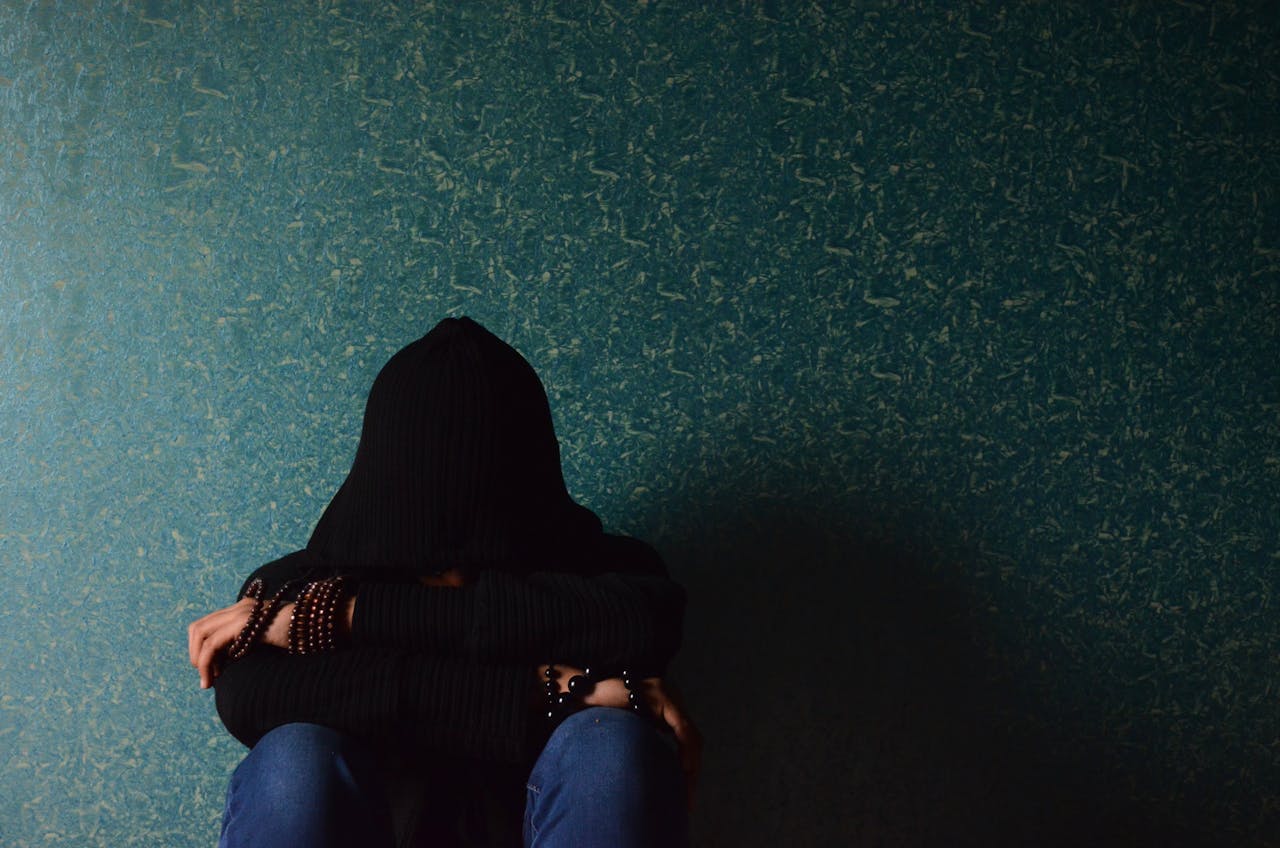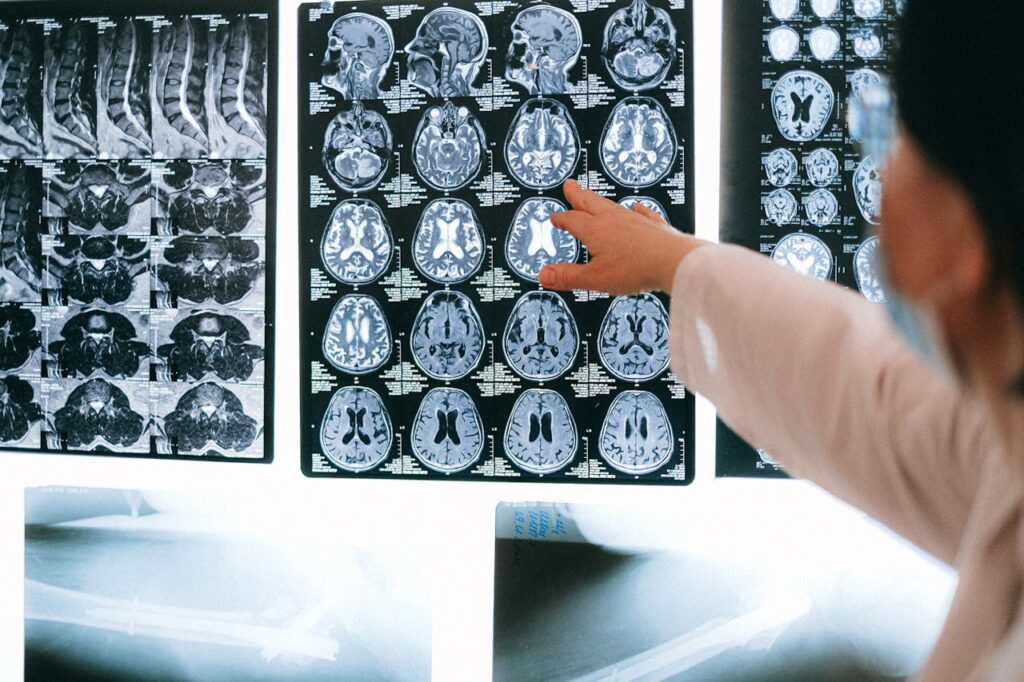How Depression and Addiction Feed Each Other—and What Breaks the Cycle

Depression and addiction often intertwine in ways that few people fully recognize. Many who seek help at an addiction treatment center San Fernando Valley soon realize they’re not dealing with two separate struggles but one that feeds itself. When low mood leads to substance use and substance use deepens despair, it forms a loop that’s difficult to escape without professional support. This cycle affects both the brain and behavior, trapping people in patterns that seem impossible to break through willpower alone. Yet the connection isn’t a life sentence. Modern integrated care helps people stabilize mood, repair damaged brain chemistry, and rebuild self-worth at the same time. Recovery begins once both conditions are treated together—addressing not just the symptoms but the emotional roots that connect them.
How Does the Brain Trap People in the Depression–Addiction Loop?
Both disorders hijack similar regions of the brain responsible for decision-making and reward processing. The dual diagnosis treatment center Los Angeles approach focuses on these overlaps because treating only one side doesn’t work. Chronic use of alcohol, opioids, or stimulants suppresses dopamine receptors, leaving the person unable to feel normal pleasure. Depression does the same thing by reducing the brain’s reward sensitivity. When combined, they create emotional flatlining—life feels colorless, slow, and meaningless.

People then chase that missing spark through more substance use, repeating the same neurological trap. Studies on depression and substance abuse statistics show that nearly 60 percent of those with addiction experience major depressive symptoms. Brain imaging also reveals reduced activity in the prefrontal cortex, the region responsible for impulse control. That’s why early interventions that balance brain chemistry through medication, exercise, and structured therapy play such a major role in long-term success.
How Brain Chemistry Proves the Connection
Modern imaging has made the relationship between depression and substance abuse impossible to ignore. It’s not only emotional—it’s measurable.
- MRI studies show dopamine receptor loss of 25–30% after long-term drug use.
- Depression causes up to 40% lower serotonin transporter levels in key mood areas.
- The prefrontal cortex, which controls judgment, shows reduced activity in both disorders.
- Combined depression and drug abuse increases impulsivity by nearly 60%.
- Patients who restore normal dopamine levels through therapy have 70% better outcomes.
What Makes Self-Medication So Hard to Recognize?
Using drugs or alcohol to cope often begins as self-protection. The relapse prevention program California method focuses on identifying this subtle phase before it hardens into dependency. People struggling with addiction and depression usually don’t seek intoxication—they seek quiet. The drink, pill, or hit provides a break from guilt, fear, or intrusive thoughts. Over time, the brain links “numbness” with “safety,” turning self-medication into emotional conditioning. When the person finally stops using, sobriety itself can feel unsafe.
This false association explains why relapse often happens right after detox, not months later. Effective depression and substance abuse treatment rewires those associations through cognitive behavioral therapy and mindfulness. Patients learn to tolerate difficult emotions without reaching for substances. Loved ones who wonder how to help someone with drug addiction and depression can support this phase by validating discomfort rather than trying to fix it instantly.
Why Self-Medication Feels Like Safety—Until It Isn’t
People often use substances to silence pain, not to chase pleasure. The short-term comfort disguises long-term damage.
- About 73% of clients in dual-diagnosis programs report starting substance use for “emotional relief.”
- The brain’s reward center begins associating “numb” with “safe” within 6–8 weeks of repeated use.
- Relapse risk spikes within 30 days post-detox when emotional triggers go untreated.
- Self-medicating alcohol users have a 40% higher chance of developing major depression.
- Integrated therapy addressing both mood and behavior cuts relapse by nearly half.
Why Does Decision Fatigue Destroy Willpower?
Daily life under both conditions becomes mentally exhausting. Even simple tasks require energy the brain no longer produces naturally. In treatment, the inpatient rehab Los Angeles model teaches structure to combat this fatigue. Depression clouds focus; addiction disrupts sleep and nutrition. Together, they drain executive function—the mental muscle that says “no” to cravings. This is why many people describe early depression in recovery as feeling lost or paralyzed. Decision fatigue doesn’t mean weakness; it’s biological overload.

Restoring order starts with small, repeatable routines: waking up at the same hour, eating balanced meals, and setting achievable goals. These habits rebuild confidence and reduce chaos, both of which are essential for sustaining sobriety. Therapy helps retrain the prefrontal cortex to manage stress more effectively. Each consistent day without substances strengthens neural pathways tied to patience and emotional regulation, gradually restoring authentic control.
How Exhaustion Fuels Relapse More Than Craving
Depression and addiction drain decision-making power until even small choices feel impossible. Fatigue becomes the silent driver of relapse.
- Over 65% of relapses occur during periods of high stress or low sleep quality.
- Chronic substance use shortens REM sleep by 25–50%, worsening fatigue.
- Depression-related decision fatigue reduces daily task efficiency by 30–40%.
- Structured routines reduce relapse rates by up to 60% in inpatient settings.
- Adequate rest and meal regularity increase emotional stability within two weeks of treatment.
Why Can Stillness Feel Terrifying After Detox?
For those with trauma-linked depression, peace doesn’t always feel peaceful. The individual therapy for addiction treatment process often reveals that quiet triggers anxiety because the body associates calmness with danger. When external chaos disappears, buried memories surface. Drugs and depression share this strange overlap—both suppress the nervous system’s ability to process fear. After detox, when the noise stops, people often experience panic attacks or intrusive thoughts. Body-based approaches like somatic therapy and EMDR help the brain learn that stillness is safe.
The key isn’t distraction but retraining the nervous system to stay grounded. Clients practicing breathing, yoga, or guided relaxation reintroduce comfort without substances. Understanding this dynamic prevents relapse driven not by craving but by fear of calm. Addressing trauma directly restores emotional safety and prevents unresolved pain from hijacking progress in depression and addiction recovery.
Why Calm Feels Uncomfortable After Chaos
Stillness can trigger panic for trauma survivors who’ve lived in fight-or-flight mode for years. Learning to feel safe again is often the hardest part of recovery.
- Around 70% of people with substance use disorders report trauma history.
- PTSD and depression overlap in 50–60% of dual-diagnosis cases.
- EMDR and somatic therapies reduce anxiety symptoms by up to 80% after 8–12 sessions.
- Breathing and mindfulness techniques lower heart rate variability linked to panic by 30%.
- Patients practicing grounding exercises relapse 50% less frequently than those who don’t.
How Do Nutrition and Inflammation Affect Mood Stability?
Depression and substance abuse deplete the body’s resources. During detox, nutritional repair becomes vital, and programs such as group therapy for addiction treatment often include education on how biology shapes emotion. Vitamins B6, B12, and folate help synthesize serotonin and dopamine; deficiencies make both depression and cravings worse. Chronic inflammation from poor diet or alcohol damages the gut–brain connection, leading to unstable mood and fatigue.

Research linking substance abuse and depression with metabolic dysfunction shows that simple improvements—hydration, nutrient-dense meals, reduced sugar—directly affect mood regulation. Restoring gut health through probiotics and balanced meals strengthens mental resilience as much as counseling. The more stable the body’s chemistry, the more consistent emotional recovery becomes. Encouraging clients to treat nutrition as a daily therapy session reframes healing from restriction into empowerment. Food literally becomes a tool to rebuild mood balance and energy.
The Biological Role of Nutrition in Emotional Repair
The body’s chemistry shapes mood recovery just as much as therapy does. Proper nutrition reverses the internal depletion addiction leaves behind.
- Chronic alcohol use depletes B1 (thiamine) and B6, leading to fatigue and mood swings.
- Low magnesium levels are found in over 60% of patients with both substance abuse and depression.
- Probiotic supplementation improves emotional regulation within 4 weeks in recovery programs.
- Anti-inflammatory diets reduce depressive symptoms by 35–40% in clinical trials.
- Omega-3 supplementation can increase antidepressant response by up to 50%.
Why Does the Brain Replace One Addiction With Another?
Substance use may end, but the reward system’s wiring still craves stimulation. The family therapy in addiction treatment setting helps clients identify new compulsions—social media, spending, or gambling—that mimic old patterns. These behaviors trigger the same dopamine surges and the same guilt when they spiral. Many people in depression and substance abuse recovery describe feeling restless even in sobriety because the brain hasn’t relearned moderation. Recognizing the substitution trap is critical.
The mind seeks comfort through repetition, so awareness becomes the first safeguard. Families can reinforce healthy replacements—exercise, creativity, service—that satisfy the need for reward without destruction. Sustainable recovery depends on learning to experience pleasure without shame. Addressing these “invisible addictions” ensures the brain heals rather than merely swaps one dependency for another, maintaining long-term emotional balance and preventing secondary relapse risks.
What Happens When One Addiction Replaces Another
Even after detox, the brain still craves reward. Hidden addictions quietly take the place of visible ones unless addressed directly.
- Behavioral addictions affect 1 in 4 people in early recovery.
- Dopamine surges from social media or gambling mimic drug-related highs within seconds.
- Up to 70% of clients in their first year of sobriety report replacing substances with another habit.
- Mindfulness training reduces compulsive behavior by 42% in recovery studies.
- Family-supported recovery reduces the chance of new addictions forming by half.
How Can People Rebuild Identity and Rediscover Joy?
Healing both depression and drug abuse requires more than removing substances—it requires rebuilding a sense of self. Programs incorporating equine therapy for addiction treatment often highlight how emotional connection and responsibility reawaken dormant pleasure responses. Depression strips identity; addiction replaces it with survival. Recovery restores meaning through purpose and belonging. Clients rediscover who they are by connecting with others, caring for animals, and contributing to something larger than themselves. These experiences help normalize dopamine function naturally.

Creating art, maintaining routines, or forming authentic friendships rewires the brain for genuine reward. That’s how drugs and depression finally lose their hold. Recovery becomes about expansion, not restriction—feeling alive again rather than simply abstinent. Over time, joy no longer feels foreign; it becomes part of daily life. That’s the ultimate proof that both mind and body can heal from dual conditions once treated in unison.
How Joy and Identity Return in Lasting Recovery
The final phase of healing is rediscovering self-worth and genuine pleasure. Recovery becomes not just survival—but a new way of living.
- Stable sobriety improves dopamine receptor density by 20% after 90 days.
- Participation in purpose-driven activities raises happiness scores by 35%.
- Clients engaged in creative or animal-assisted therapy report 60% fewer depressive episodes.
- Rebuilding identity through relationships increases long-term sobriety success by over 70%.
- Those in dual-care programs show 50% better mood stability one year post-treatment.
What Truly Breaks the Cycle Between Depression and Addiction?
The loop between depression and addiction ends when treatment integrates mind, body, and community. No single method works in isolation. Holistic therapy, medication management, nutrition, and consistent support reprogram the brain to respond to life rather than escape it. Recovery isn’t instant; it’s cumulative progress built one choice at a time. Families play a major role by offering compassion instead of judgment and reinforcing positive change. The statistics behind substance abuse and depression are sobering, but they also prove that recovery is possible when both conditions receive equal attention. Hope grows as neurochemistry stabilizes and emotional safety returns. Each step toward balance—better sleep, real conversation, small victories—builds momentum that lasts. If you or someone you care about is struggling, reach out today. Contact us if you want to speak with a treatment specialist who can guide you toward healing, stability, and the confidence to move forward.
You Have Questions
We Have Answers
At Tranquility Recovery Center, we offer treatment for a wide range of addictions, including alcohol, opioids, prescription drugs, and illicit substances. Our team tailors each program to meet individual needs, focusing on both the physical and emotional aspects of recovery.
At Tranquility Recovery Center, we offer treatment for a wide range of addictions, including alcohol, opioids, prescription drugs, and illicit substances. Our team tailors each program to meet individual needs, focusing on both the physical and emotional aspects of recovery.
At Tranquility Recovery Center, we offer treatment for a wide range of addictions, including alcohol, opioids, prescription drugs, and illicit substances. Our team tailors each program to meet individual needs, focusing on both the physical and emotional aspects of recovery.